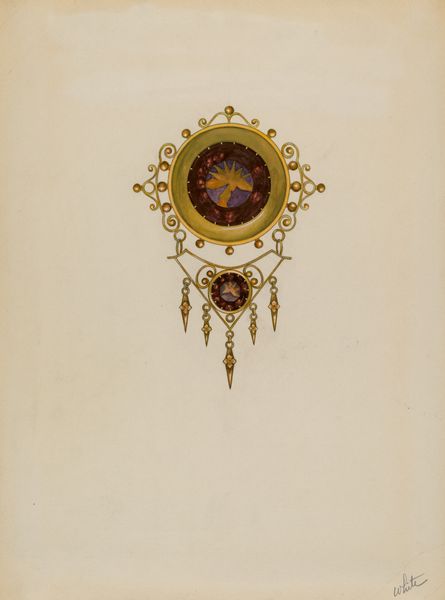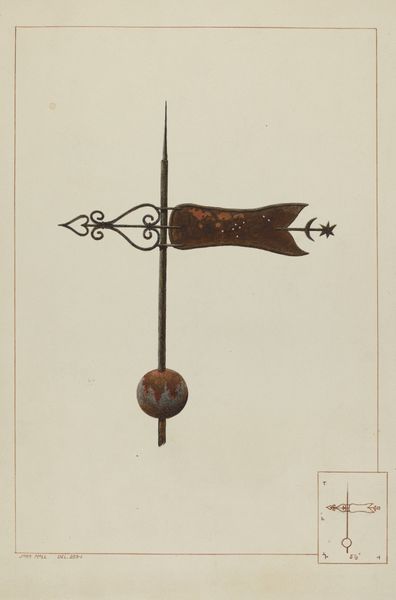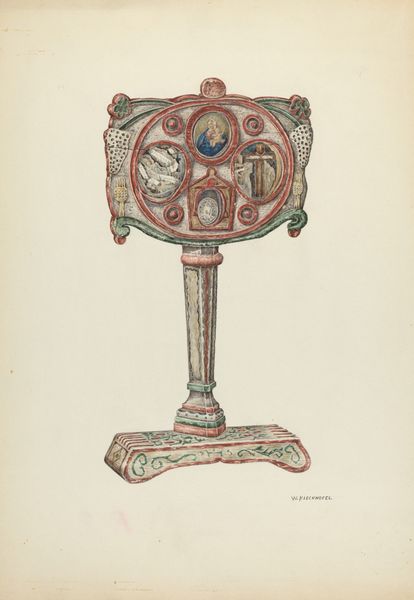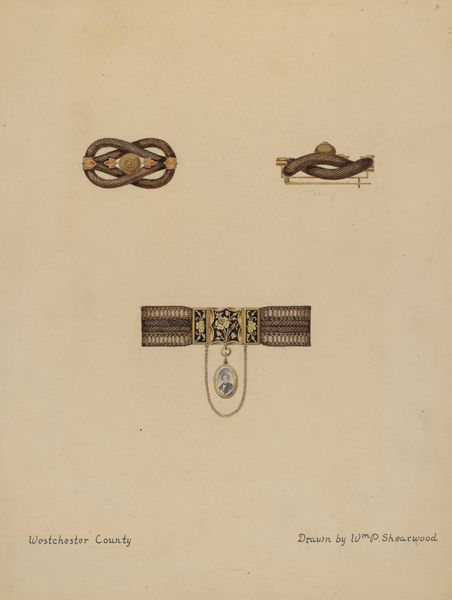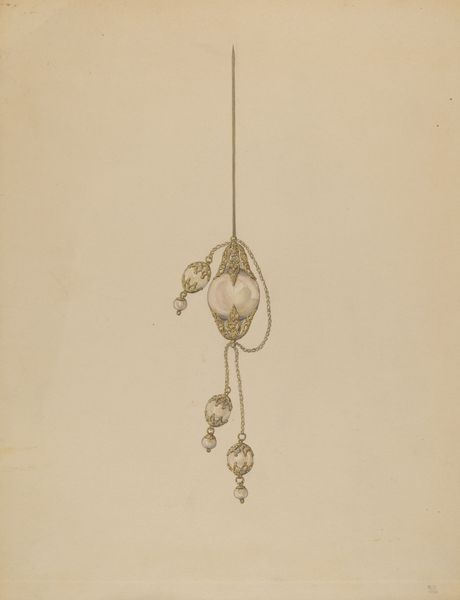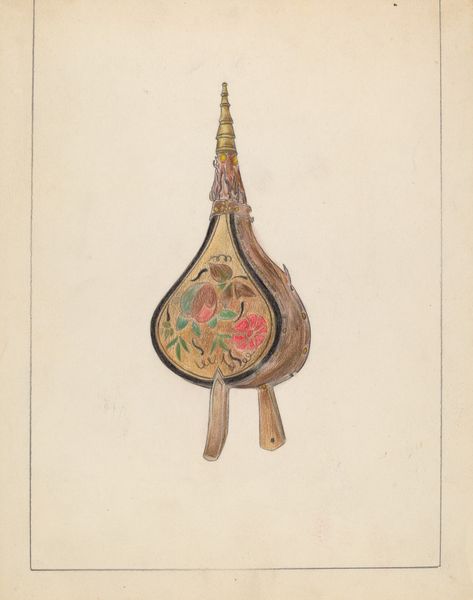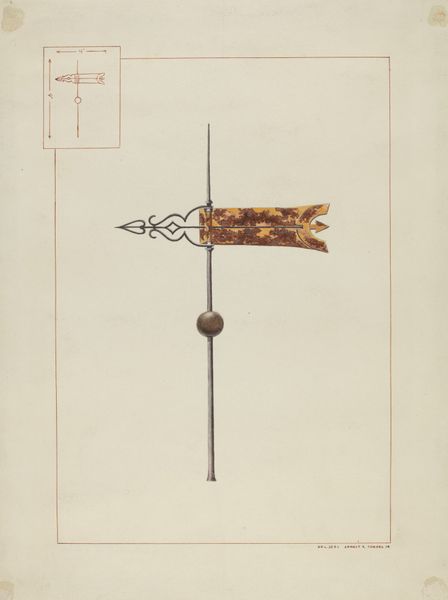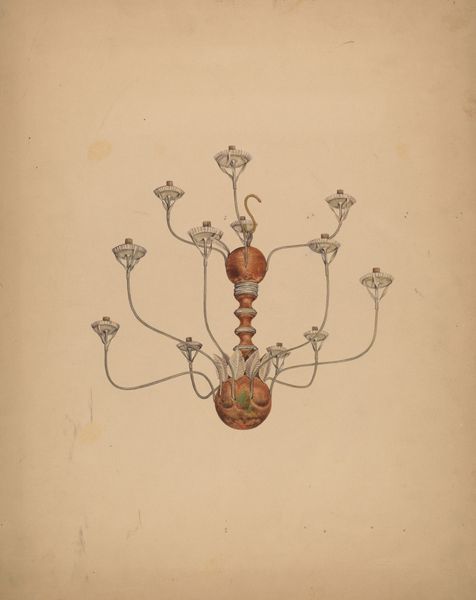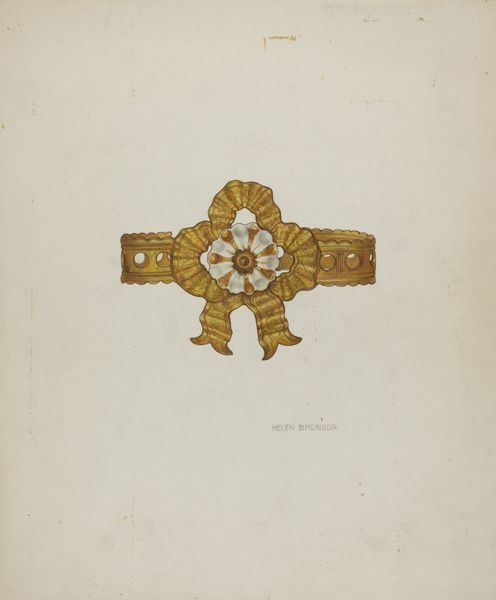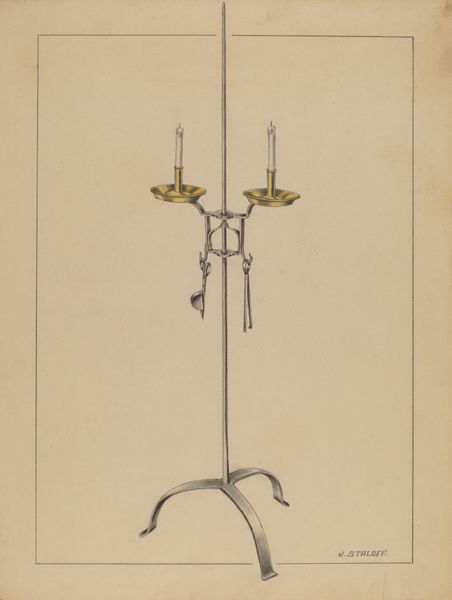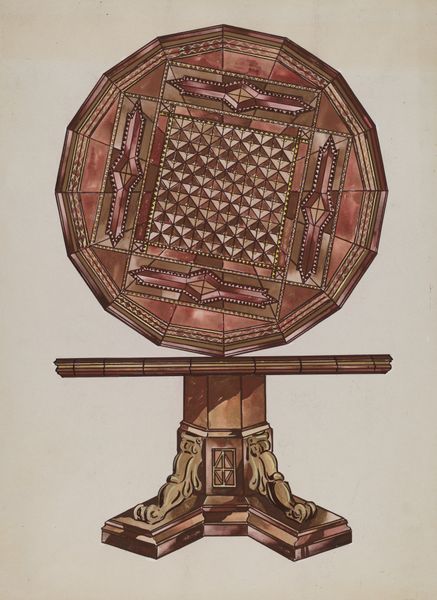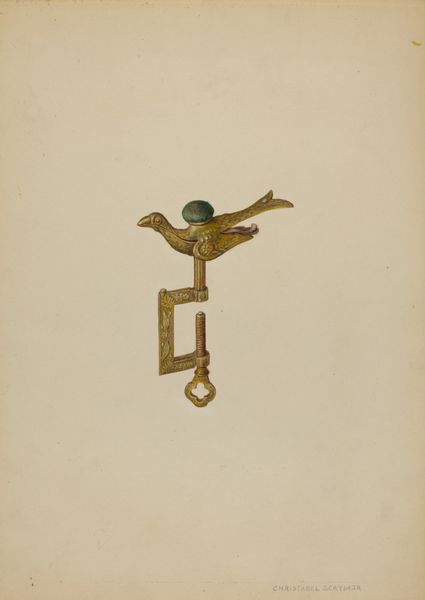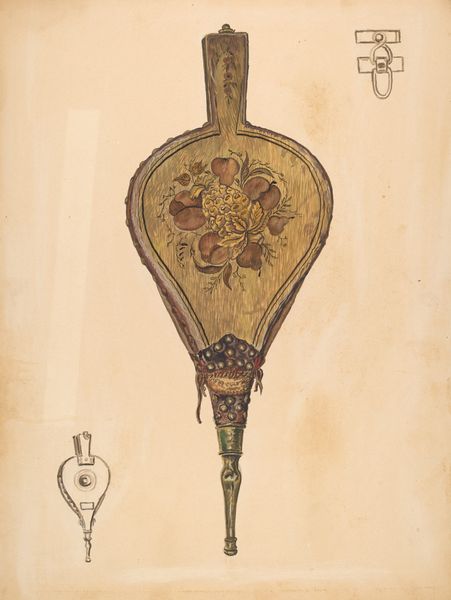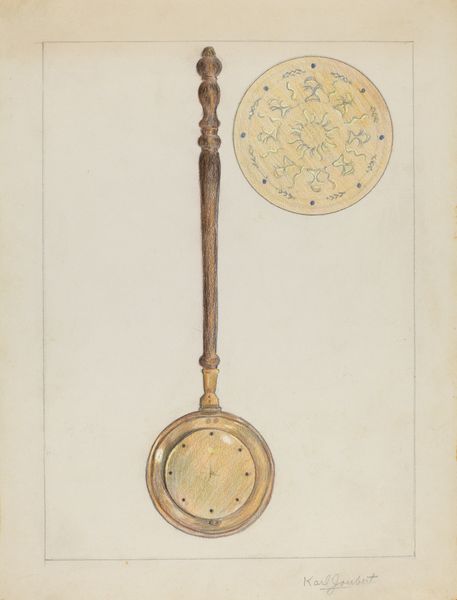
drawing, coloured-pencil
#
drawing
#
coloured-pencil
#
water colours
#
coloured pencil
#
decorative-art
Dimensions: overall: 30.3 x 22.9 cm (11 15/16 x 9 in.)
Copyright: National Gallery of Art: CC0 1.0
Curator: Here we have a drawing, titled "Comb," created sometime between 1935 and 1942 by an anonymous artist, rendered in coloured pencil. Editor: It has an unexpected quietness about it. It's clearly depicting something ornate, luxurious even, yet the colour palette and the soft pencil lines mute any potential gaudiness. The creamy, almost antiquated paper it is drawn on only reinforces that first impression. Curator: Agreed, it speaks to the craftsmanship and societal constructs surrounding adornment. Considering the period, we might examine the work through a lens of gender, exploring the performative aspects of femininity, the cultural weight placed on personal appearance. What statements were women making? Editor: And it all comes down to the act of production doesn't it? Looking at this object—as object and image—makes me want to consider its provenance. Was this meant as design blueprint? Is that why the artist chose coloured pencil rather than paint, suggesting ease of revision, affordability and transportability? These materials themselves were shaped by market economies, distribution networks… Curator: Certainly. We can analyze this through the context of class too: Who wore such combs? Who manufactured them? Were these attainable aspirations for a wider segment of the population during that era or purely aspirational emblems of status? The cascading chains suggest movement and sound; what type of space would this decorative object be found in, drawing the attention of the viewer? Editor: It's like an archaeological record of consumer desire. We know, or we can intuit, that the material richness signified something specific at the time; we just have to uncover those industrial networks that brought the materials into being to form an intimate object. Curator: It certainly prompts many avenues of inquiry. I leave feeling aware of the multiple layers of meaning a single object can possess, revealing stories about identity and cultural norms. Editor: I’m left with a profound respect for the labour invested—both by the unseen maker of this drawing, and also for all those who extracted and crafted the components necessary for the comb itself. It’s a good reminder to keep these processes in mind when viewing objects that might otherwise appear to exist separate from everyday realities.
Comments
No comments
Be the first to comment and join the conversation on the ultimate creative platform.
